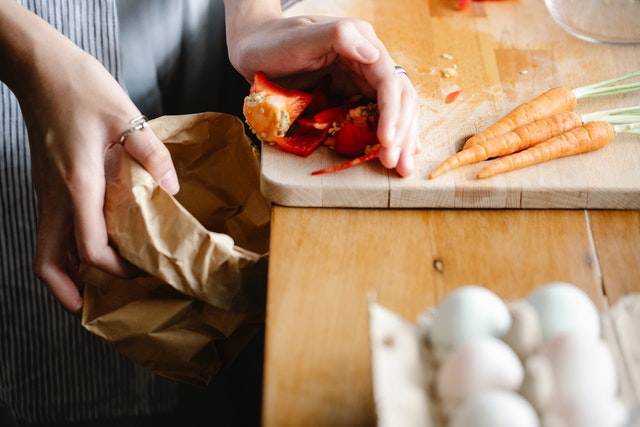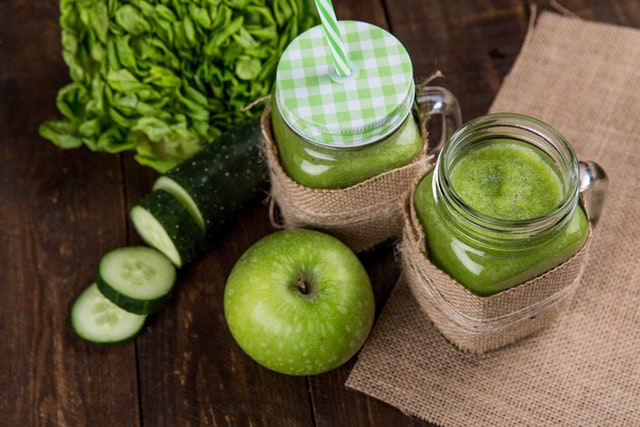When we waste less food, we need less of it per person to sustain us. In reducing the amount of food each person requires we can reduce the land area needed to grow food, and we can potentially let that space go wild once more. We can dedicate more space to its natural and historic purpose, resulting in less flooding, buffer zones that can help reduce the impact of natural disasters, and more green space for local and migratory animals. This causes land to be more resilient to changing weather, and more capable of capturing carbon, an essential element in reducing the effects of climate change.
We can also reduce the water used to grow crops, fuel needed to tend to and transport crops, and energy used in the processing and refrigeration of the food.
In the previous article, we focused on how to plan our grocery trips in a way to reduce food waste. Now we’ll focus on how to stop wasting food once it’s home.
Once you’re done shopping, make sure to put your food away properly. If pests are a problem in your area invest in air tight containers to put in your pantry, or store items like grains in the freezer. For cans and shelf stable cartons, put all new containers in back of the items already in your pantry. This will help you eat older items first, reducing the chance of anything going to waste. While you’re organizing your cans and cartons, check the dates to see if anything needs to be used up quickly. And speaking of checking dates, make sure you familiarize yourself with what best-by, sell-by, and use-by dates actually mean.
Always use up highly perishable food quickly along with any damaged produce before using heartier items like potatoes or cabbage. If you notice a particular item getting wasted often, commit to buying less of it on any particular grocery trip or use it within two days of grocery shopping. And if you cook with lots of fresh produce, implement a twice weekly perishable food scan to see what needs to be used up soon.

Be realistic about your cooking and eating habits. If you don’t like leftovers or regularly let leftovers go bad, cook smaller batches of food. And when you’re cooking the food, loosen up how you follow recipes. If something calls for half a bunch of parsley but you don’t have a use for the leftover parsley, throw in the whole bunch. If a recipe calls for 1 cup of onion but your chopped onion amounts to 1.5 cups, either put the whole onion in or make sure you can use the additional half cup of onion in a different recipe within the next few days. If a recipe calls for fresh herbs but you don’t have any, use dried herbs instead. Once you let yourself deviate from a recipe’s stated ingredient amounts your food waste will immediately lessen.
Also, experiment with finding or creating easy and forgiving recipes to use up random food items. Examples of this would be fridge dump soups, smoothies, or pickled vegetable recipes to use up odds and ends. Canning and fermenting are great ways to preserve larger quantities of produce. The last two will be particularly helpful during harvest time if you grow a garden.

Revive vegetables with water. For wilted lettuce, celery, kale, chard, asparagus, etc. trim the bottom of the stems and stick the stems in a bowl of water. The vegetables will take in the water and be crisp again in a few hours.
Freezing is another valuable method of reducing food waste. I will write an article on how to freeze various ingredients, but until then this article has lots of valuable information. Freeze leftover soups for quick dinners as well as overripe fruits and sad looking vegetables for later use.
Look at your compostable discards and brainstorm if you can use those items creatively in the future. Maybe you could freeze strawberry tops and put them in future smoothies. Or keep onion peels in the freezer for homemade stock. If you eat meat, could you make your own broth from the leftover bones? Perhaps you could try sauteeing beet greens or making onion tops, carrot tops, or radish tops into a flavorful pesto. Blend up overripe fruits to add to baked goods in place of eggs or oil, or use the pulp from juicing to bulk up homemade crackers. Cooking with food scraps is a great way to reduce food waste and spend less at the grocery store.
Compost all that’s left.
In the next article, I’ll talk about how you can extend your actions to your local community.